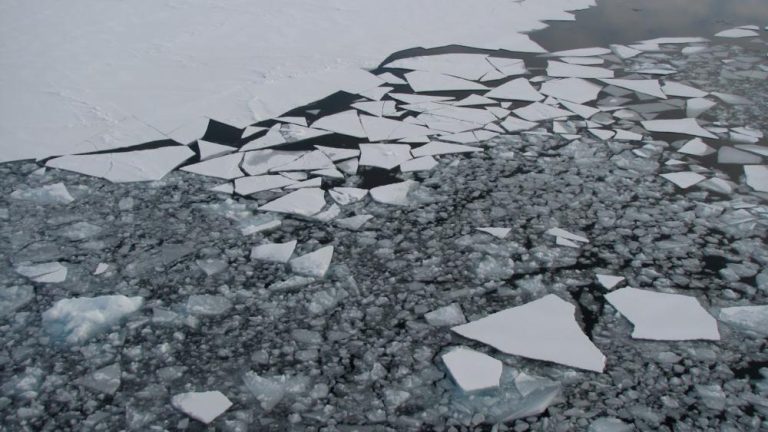UNIVERSITY PARK, Pa. — Arctic sea ice is shrinking as the world continues to warm, and a new study led by researchers at Penn State may provide a better understanding of how the loss of that ice affects daily weather in mid-latitudes, like the United States.
The researchers used climate models and machine learning approaches to tease out the impacts of the loss of sea ice on the future of large-scale meteorological patterns over North America. The loss of sea ice has reduced these patterns and their effects on temperature near the surface, meaning, for example, that cold weather events may be less cold, they report in the journal Climate.
“The Arctic in general is the source of cold air for us when we experience these really cold events,” said Melissa Gervais, an assistant professor in the Department of Meteorology and Atmospheric Sciences at Penn State and lead author of the study. “As temperatures continue to rise, we know the Arctic will be less cold. What this work shows us is that the loss of sea ice also changes weather patterns that bring cold air into the mid-latitudes. So, warming depletes your supply of cold air and makes It is difficult to move.
Sea ice acts as a cover over the ocean, preventing warm water from losing heat to the atmosphere, Jervis said. Once the ice is gone, heat from the ocean can enter the atmosphere and create a low pressure system over where the ice was, reducing the transport of cold Arctic air to other parts of the Earth, scientists said.
As sea ice melts, the Arctic is warming at a faster rate than the rest of the planet, a process called Arctic amplification. While less cold air would be expected to be transported from the Arctic to midlatitudes under these conditions, the new study allowed researchers to investigate more deeply into the mechanisms responsible for these changes.
“Our research allowed us to dig a little deeper into what was going on,” Gervais said. “We were able to see that in addition to the Arctic amplification effect, there is also an effect on the actual circulation or flow in the atmosphere.”
To test the effect on weather patterns, scientists ran a climate model under two scenarios — one with ice levels consistent with the 1980s and 1990s, and one with lower ice levels expected by the end of the century.
They used self-organizing maps, a machine learning method, to classify daily weather patterns in the troposphere, the lowest layer of Earth's atmosphere where most weather events occur. They then explored how these general weather patterns translate into variables closer to the surface.
“Without using this machine learning method, we would not have been able to have a strong understanding of the processes involved,” Gervais said. “For studies like this, where we use a large amount of climate model simulations, we can't find these patterns manually.”
One weather pattern particularly affected by sea ice loss involved cold weather anomalies over North America. This pattern is associated with strong cold anomalies, which have reached nearly 29 degrees Fahrenheit under current sea ice conditions but have risen significantly under scenarios with less sea ice, scientists said.
“We found that when we lose sea ice, this anomaly not only decreases, but it also becomes a warm pattern,” Gervais said. “So the same pattern in the upper atmosphere is now actually causing temperatures to rise near the surface.”
Lantao Sun, a research scientist at Colorado State University, and Clara Desser, a senior scientist at the US National Science Foundation's (NSF) National Center for Atmospheric Research, also contributed to the study.
The NSF supported this work.

